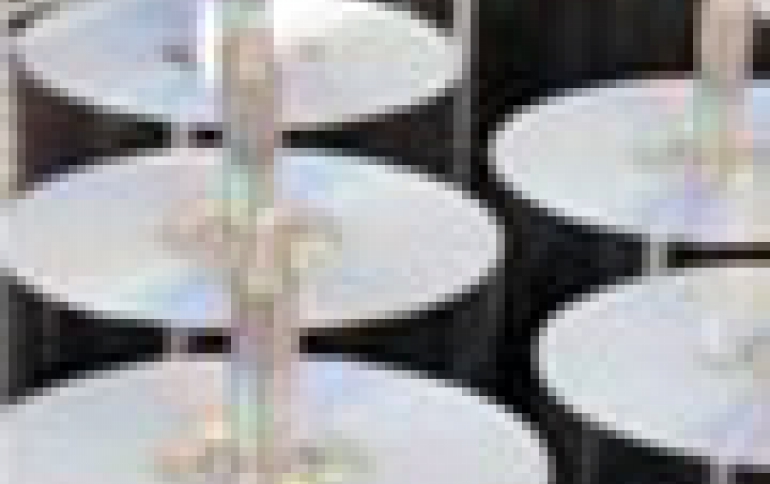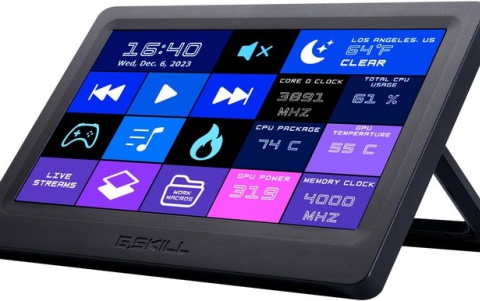
ECMA Updates Test Method for the Estimation of the Archival Lifetetime of Optical Media
The 99th General Assembly of ECMA has approved an updated version of the ECMA-379 standard for the estimation of the lifetetime of optical media as well as the ECMA-382 2nd edition standard for DVD-R for DL discs.
The latest ECMA-379 3rd Edition includes all essential testing guidelines for the estimation of the archival lifetetime of optical media. The project represented by the standard document provides a methodology that includes the testing of DVD-R/-RW/-RAM, +R/+RW optical discs.
The Optical Storage Technology Association (OSTA) initiated work on this subject and developed the initial drafts. Following that development, the project was moved to Ecma International TC31 for further development and finalization.
The latest ECMA-379 3rd Edition includes essential information about the test's stress conditions, ambient conditions, controlled storage condition, e.g. 25 °C and 50 % RH, using the Eyring model, uncontrolled storage condition, e.g. 30 °C and 80 % RH, using the Arrhenius model, evaluation system description, specimen preparation, data acquisition procedure and data interpretation.
The methodology includes only the effects of temperature (T) and relative humidity (RH). It does not attempt to model degradation due to complex failure mechanism kinetics, nor does it test for exposure to light, corrosive gases, contaminants, handling, and variations in playback subsystems.
The ECMA-379 3rd edition standard follows the ECMA-379 1st Edition, which was approved as an ISO/IEC IS 10995 Standard and published in April 2008. ECMA-379 2nd Edition was technically identical with the published ISO/IEC Standard IS 10995 1st Edition. ECMA-379 3rd Edition is editorial amendment including corrections of some calculations, and Bootstrap method was deleted. Although Bootstrap method has no problem in itself, however, miscalculation might be caused depending on the data set conditions, ECMA said.
ECMA also released the second version of the ECMA-382 2nd edition "120 mm (8,54 Gbytes per side) and 80 mm (2,66 Gbytes per side) DVD Recordable Disk for Dual Layer (DVD-R for DL)." This second version of the standard specifies two Types of dual layer Recordable optical discs, one (Type 1S) making use of recording on only a single side of the disc and yielding a nominal capacity of 8,54 Gbytes for a 120 mm disc and 2,66 Gbytes for an 80 mm disc, the other (Type 2S) making use of recording on both sides of the disc and yielding a nominal capacity of 17,08 Gbytes for a 120 mm disc and 5,32 Gbytes for an 80 mm disc. Compared to the first version, it has for editorial corrections and clarifications.
The latest ECMA-379 3rd Edition includes essential information about the test's stress conditions, ambient conditions, controlled storage condition, e.g. 25 °C and 50 % RH, using the Eyring model, uncontrolled storage condition, e.g. 30 °C and 80 % RH, using the Arrhenius model, evaluation system description, specimen preparation, data acquisition procedure and data interpretation.
The methodology includes only the effects of temperature (T) and relative humidity (RH). It does not attempt to model degradation due to complex failure mechanism kinetics, nor does it test for exposure to light, corrosive gases, contaminants, handling, and variations in playback subsystems.
The ECMA-379 3rd edition standard follows the ECMA-379 1st Edition, which was approved as an ISO/IEC IS 10995 Standard and published in April 2008. ECMA-379 2nd Edition was technically identical with the published ISO/IEC Standard IS 10995 1st Edition. ECMA-379 3rd Edition is editorial amendment including corrections of some calculations, and Bootstrap method was deleted. Although Bootstrap method has no problem in itself, however, miscalculation might be caused depending on the data set conditions, ECMA said.
ECMA also released the second version of the ECMA-382 2nd edition "120 mm (8,54 Gbytes per side) and 80 mm (2,66 Gbytes per side) DVD Recordable Disk for Dual Layer (DVD-R for DL)." This second version of the standard specifies two Types of dual layer Recordable optical discs, one (Type 1S) making use of recording on only a single side of the disc and yielding a nominal capacity of 8,54 Gbytes for a 120 mm disc and 2,66 Gbytes for an 80 mm disc, the other (Type 2S) making use of recording on both sides of the disc and yielding a nominal capacity of 17,08 Gbytes for a 120 mm disc and 5,32 Gbytes for an 80 mm disc. Compared to the first version, it has for editorial corrections and clarifications.



















